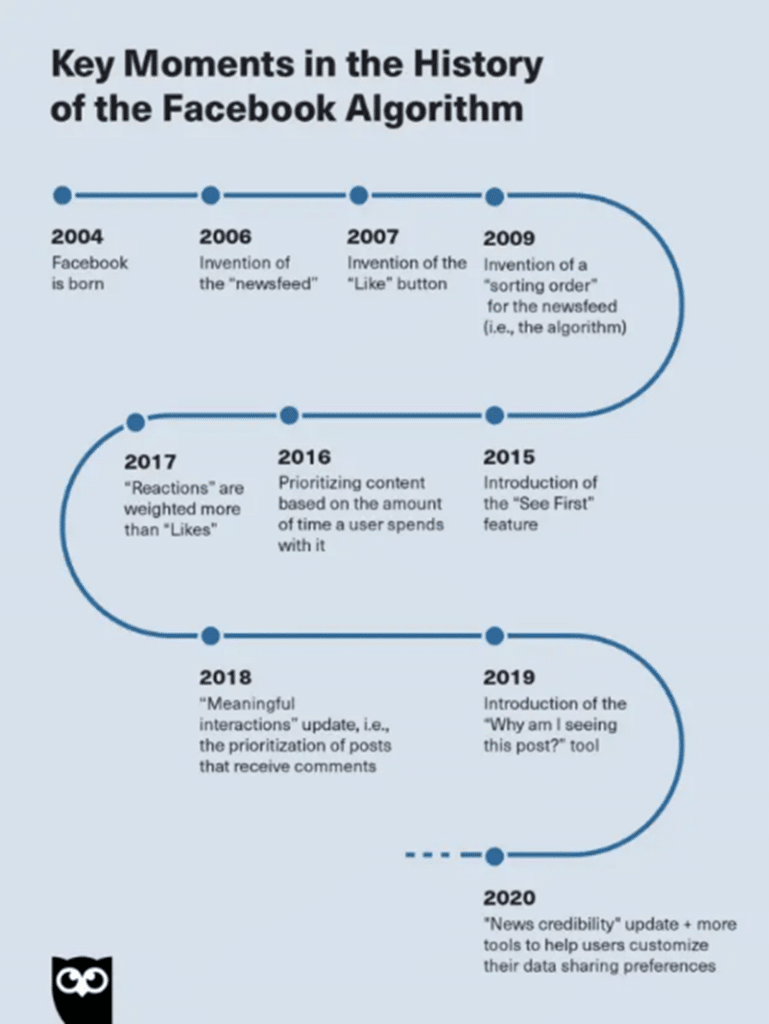According to the 2023 Digital Report by the Reuters Institute, 30% of people now use social media as their primary channel for news. However, unlike reading a newspaper, watching TV, or listening to the radio, social media presents different news to different users, essentially creating a filter bubble.
The Role of Algorithms in Personalizing Social Media Content
The reason why we are all presented with different posts across social media is due to algorithms. These algorithms select and present news to users based on several factors. This process uses:
- Personal information
- Search history
- Privacy settings
- Platforms used
- Online shopping habits
- Information provided during website registration
There is plenty of discussion around the role of AI within social media and just how invasive the methods are for gaining sufficient data to form these astonishingly accurate algorithms presenting us with feeds that we like to see.
Similarly, brands must prepare content for social media in a way that ensures it doesn’t get lost in the vast flow of information. It’s important to note that the principles of algorithm operation differ on each platform.
For example, on one of the largest social networks, Facebook, it is crucial to focus on user engagement with posted content, as algorithms favour live broadcasts and accurate external content.

On the rapidly growing platform TikTok, algorithms select content based on account settings such as language and country. The informativeness of posted videos, including captions and hashtags, is also important. TikTok, coincidentally has come under fire by some like Donald Trump for the harvesting and storage of personal data.
Meanwhile, on Instagram, the timing of content publication and user engagement with specific posts remain critical factors.
This means that when a user shows interest in a specific post, the algorithms consider factors such as the length of the text, the time of posting, and the number of reactions.
Then, the information about the person who uploaded the post is analysed, and content visible to the user is generated accordingly.
The Consequences of Algorithm Operation – Created Filter Bubbles
Each of us follows accounts and engages with topics that match our preferences, values, or other criteria on social networks. This naturally creates connections with a limited audience that shares similar interests, even without algorithms. These tendencies are further strengthened by the algorithms operating on the platforms.
This phenomenon manifests in the social space as a filter bubble – an effect created by the fact that a user’s previous actions on social networks, behaviour, and provided information determine what content will reach them in the future.
As a result, users often encounter the issue of viewing certain topics from only one perspective, seeing opinions that align with their own, while failing to consider situations from multiple viewpoints.

To break out of this created social bubble, it is important to take a few steps. First, be aware that algorithms exist and try to understand them by observing profiles with different opinions, even if they are not particularly appealing.
Additionally, visit a wider variety of reliable websites than before, and remember not to trust everything presented on social media completely.
Final Word
Although algorithms are a great tool for shaping content that aligns with our preferences, they also pose a certain risk to the user’s perception of their environment.
It is important to critically assess the principles influencing the content of social networks, to know about the filter bubble and not to forget about its existence.
Sources: Reuter Institute, BBC, Digital Marketing Institute

